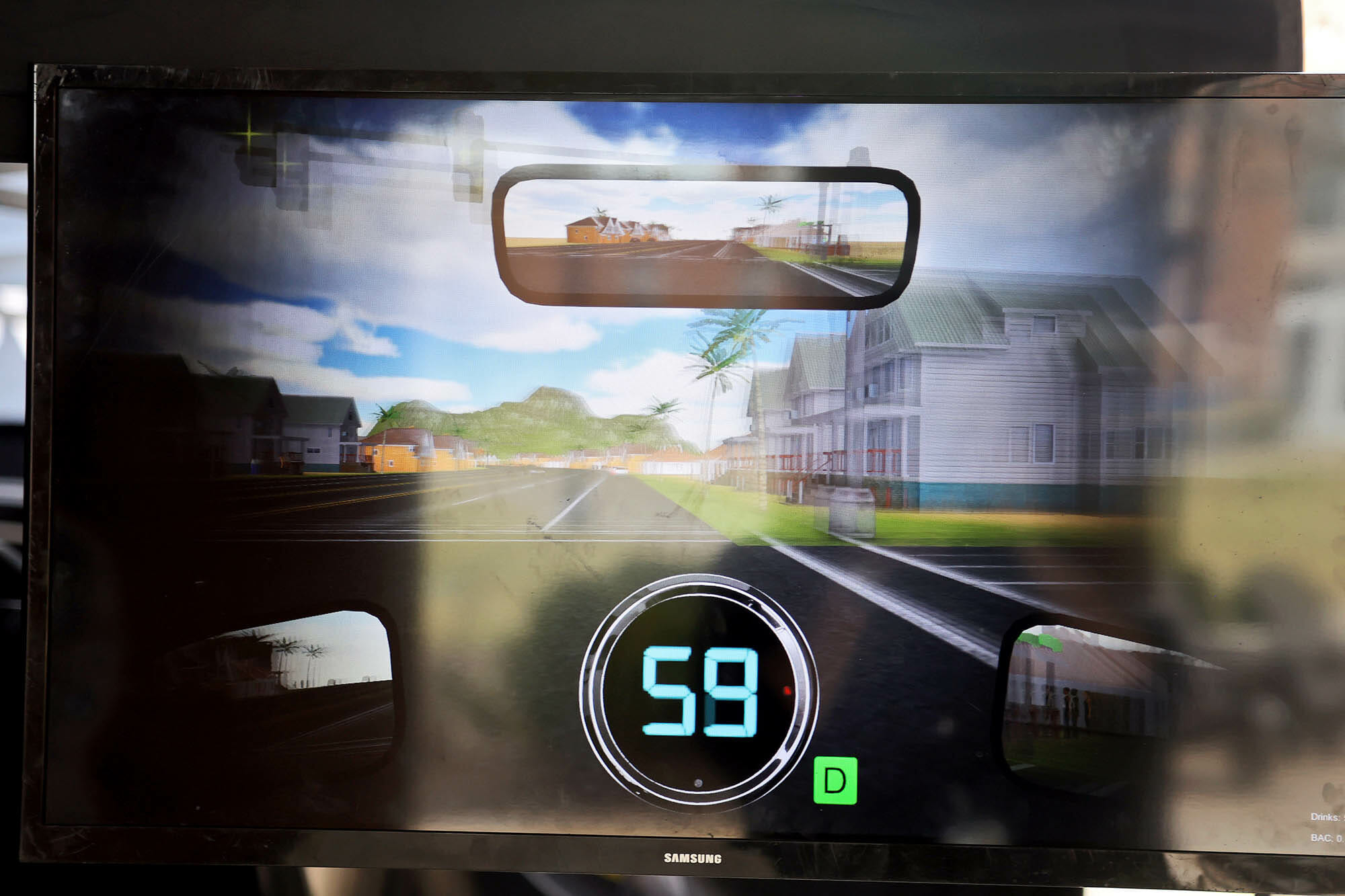This week, the Arrive Alive Tour, sponsored by the Missouri Department of Transportation, stopped at the MICDS campus to demonstrate to students the impact of impaired driving. The Arrive Alive team’s mission is to create life-long safe driving habits using a high-tech virtual reality simulator to educate students about the dangers of texting while driving and the potential consequences of driving under the influence of drugs or alcohol.
Students climbed into the Arrive Alive vehicle (with the battery disabled and the car immobilized) and put on a virtual reality headset to start the program. Sensors connected to the vehicle’s gas and brake pedals, and steering wheel enabled the participant to experience what it’s like to drive under the influence without the real-life consequences. Onlookers watched an external LED monitor near the vehicle, showing what the driver was experiencing in real time. Upon exiting the vehicle, each participant was handed a mock citation from a facilitator detailing the ramifications of their simulation. Students also completed an event survey to gauge their knowledge and experience of drinking while driving before and after they used the simulator.
According to the National Highway Traffic Safety Administration, in 2021, traffic fatalities rose 10.9% nationwide. In addition, the fatal crash rate for teens is three times greater than for drivers aged 20 and over, and driver distraction is responsible for more than 58% of teen accidents.
Upper School Counselor David Hotaling was excited to bring a serious issue to students in a fun and interactive way. “It’s hard to know how much impact it has on future behaviors, but raising awareness is always good. Also, the survey they take after they drive ensures that they reflect on their (and others’) behavior around distracted and impaired driving which is an important element of the program that makes attitudinal and behavioral change more likely,” he said.
After the event, Arrive Alive reported that 224 students had the opportunity to sit in the driver’s seat of the simulator. Over half of them completed the post-drive survey, with a remarkable 96.9% of participants indicating that they would never drive distracted again or would be more mindful of the risks involved, while also spreading awareness of the dangers of these behaviors to others.
Ash Aranha ’23 detailed the experience and said, “As you’re driving, they increase the number of drinks you had before driving, and it starts getting blurry. Your peripheral vision starts blacking out, and it’s harder to maintain driving straight and where you’re going. It was actually kind of scary because, in real life, you wouldn’t be able to brake that quickly. With this, I was still mentally thinking clearly, but when you’re actually drunk, you’re not thinking that clearly.”
Devyn Rodgers ’23 had an eye-opening experience with the simulator. “It was interesting and weird not to have the ability to control the wheel. I learned most definitely not to drive while I’m drunk. I’m not as good of a driver as I thought,” he said.
Katherine Royce ’24 participated in the drunk driving simulation and said, “It was very stressful and frustrating because the steering, brake, and gas were super sensitive, and I kept going on the wrong side of the road. I did not like it. But, I learned that drunk driving is very bad, and you could crash anytime. This is great for high school kids to educate them and have a first-hand experience of how hard it is.”
Belle Wood ’23 added, “It felt like the wheel was really sensitive, and my vision was like tunnel vision. I felt out of control. It’s so much easier to get an Uber.”
Thank you to the Arrive Alive team for this hopefully life-changing experience!















